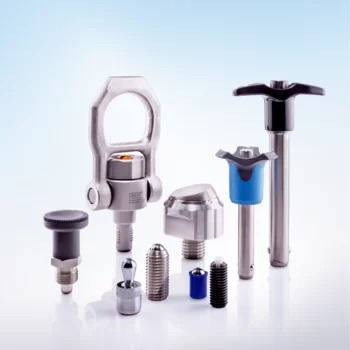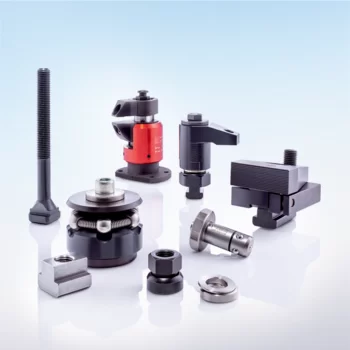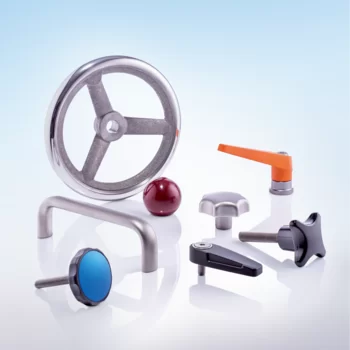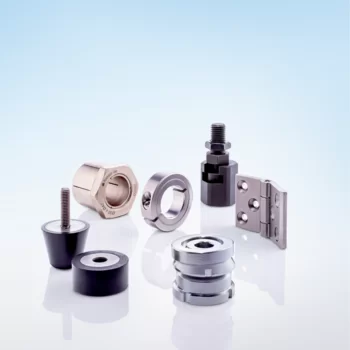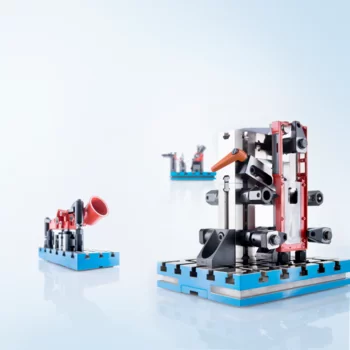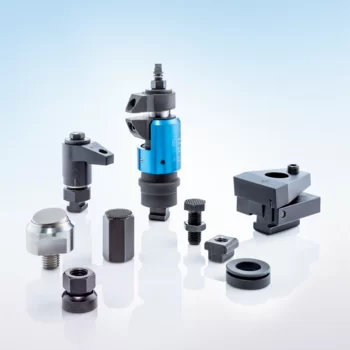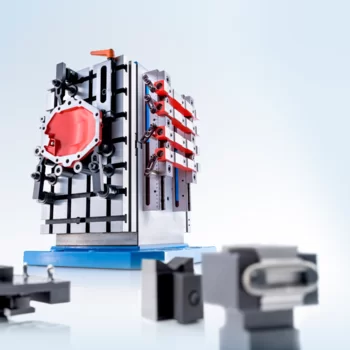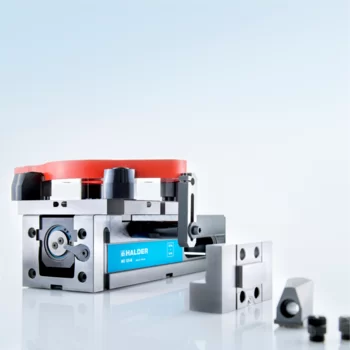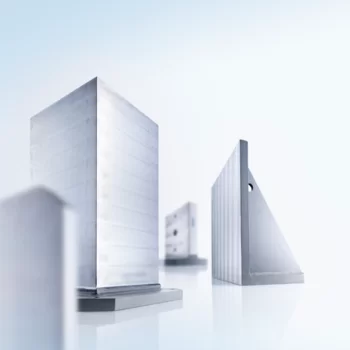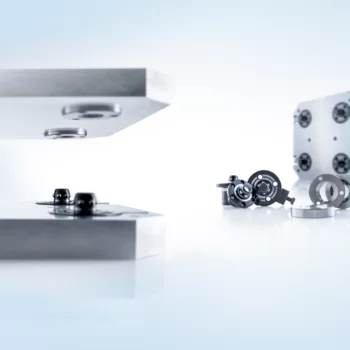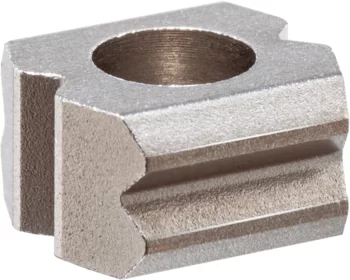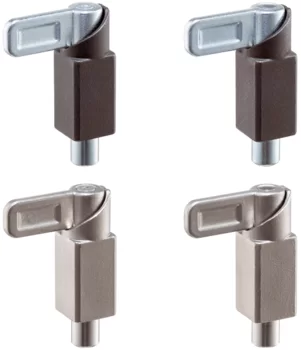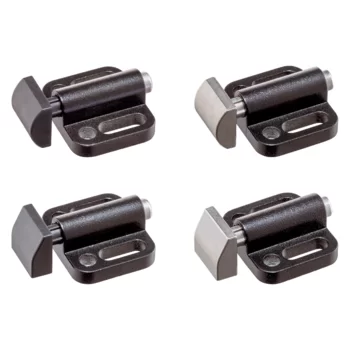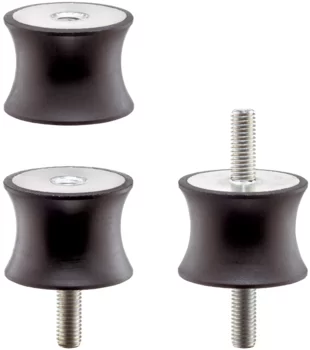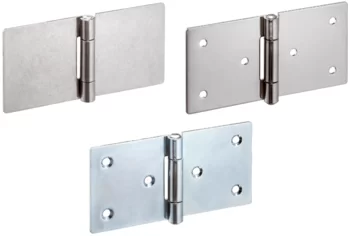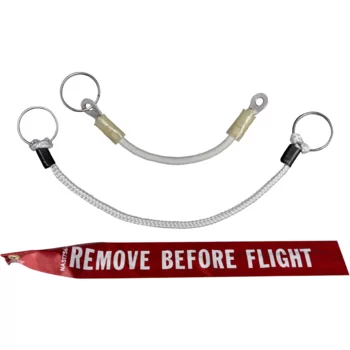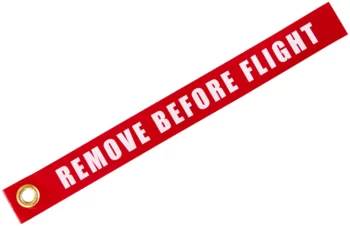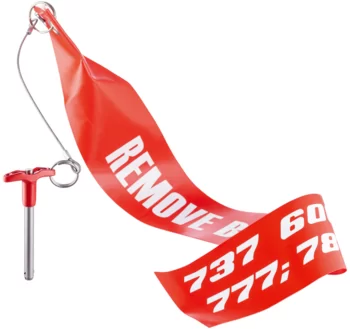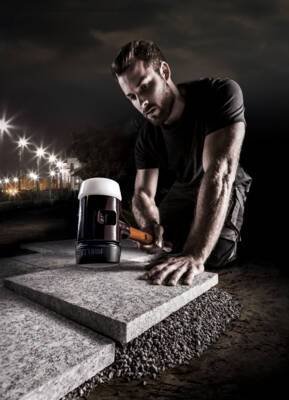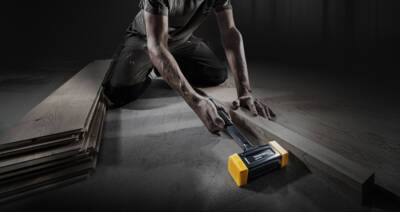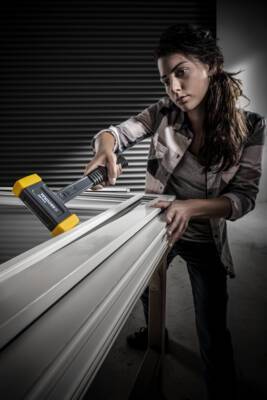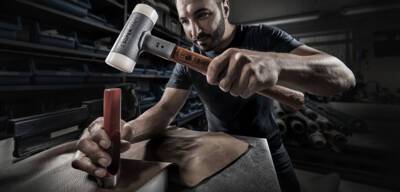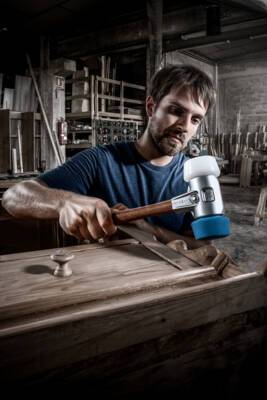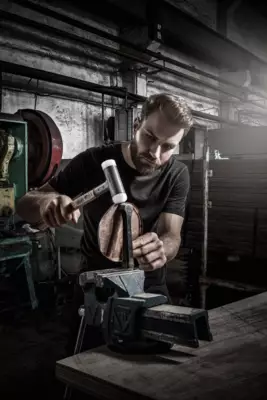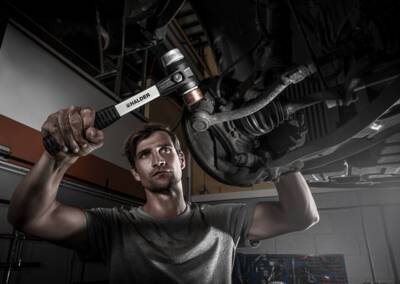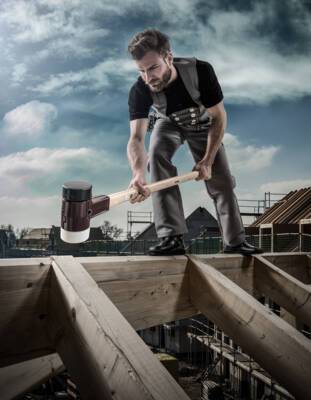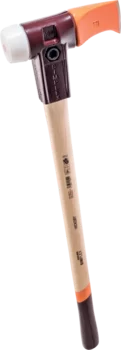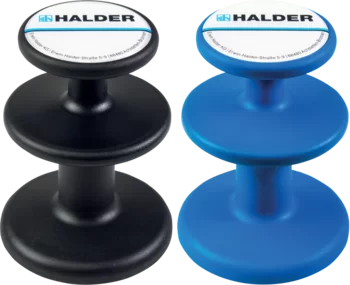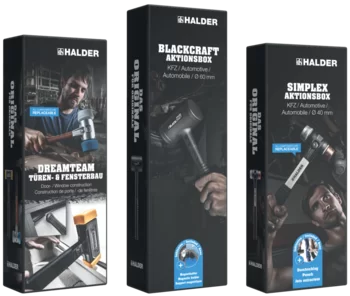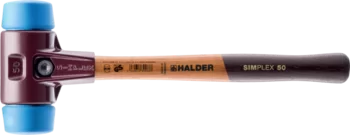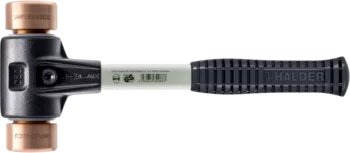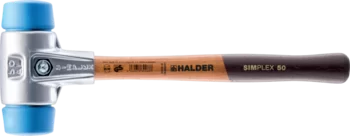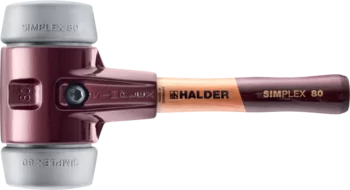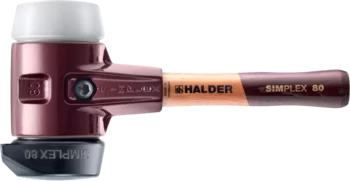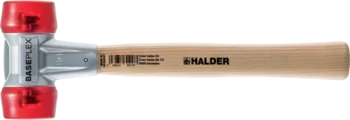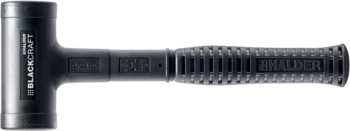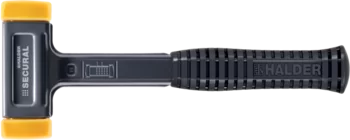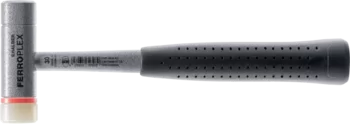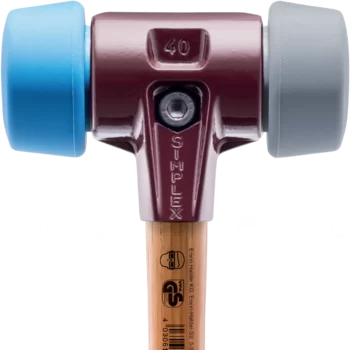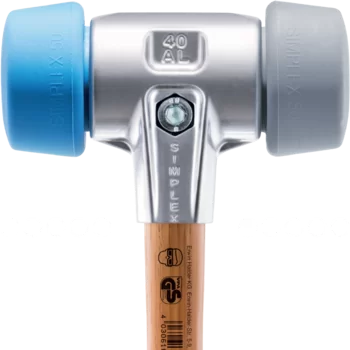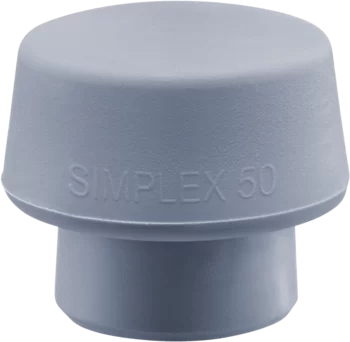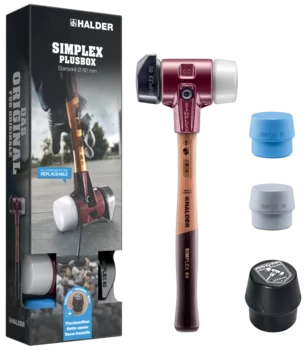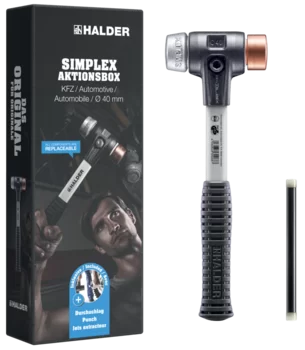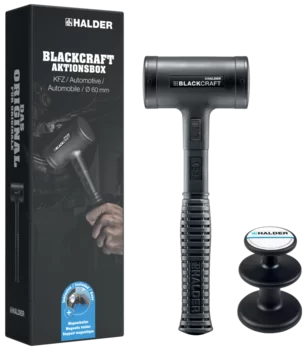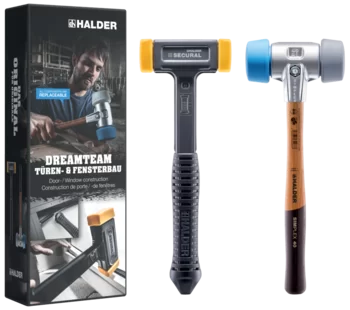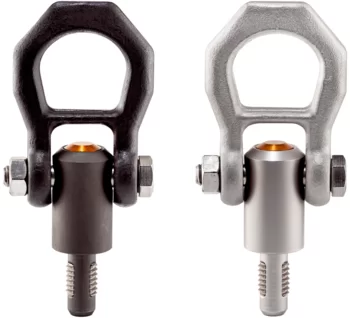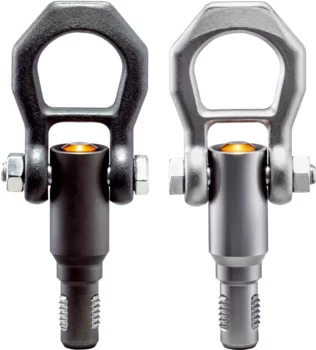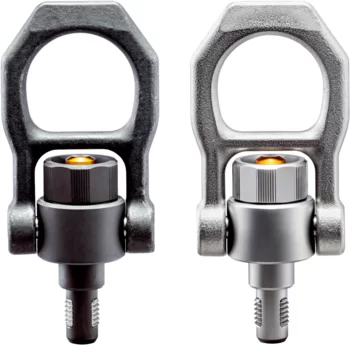What is the function of threaded lifting pins and in which industry are they used?
What is the difference between lifting pins and threaded lifting pins?
What is the advantage of the threaded lifting pin compared to eyebolts?
What must be considered when mounting the threaded lifting pins?
In which thread sizes is the threaded lifting pin available?
Under what axial load may the threaded lifting pins be loaded?
Are special designs also possible for threaded lifting pins?
What has to be considered for a special design of a threaded lifting pin?
Does the information on the threaded lifting pins indicate the production lot?
Of what materials are the threaded lifting pins made?
What is the lifetime of a threaded lifting pin?
What is the function of threaded lifting pins and in which industry are they used?
Any components, machines and workpieces with an existing thread can be lifted or secured directly via the thread. The threaded lifting pins are used in almost all industries, e.g. in mechanical engineering, electrical industry, fixture construction and assembly.
What is the difference between lifting pins and threaded lifting pins?
The lifting pins can be mounted very quickly in existing bores with undercut.
Components that already have an existing thread can be moved or lifted with the threaded lifting pin by inserting the threaded lifting pin into the threaded hole.
Previously used eyebolts can be replaced with the Halder threaded lifting pin without any problems or mechanical changes to the component - please refer to the load specifications in the catalogue.
What is the advantage of the threaded lifting pin compared to eyebolts?
Eyebolts are cheaper, but they remain on the parts to be moved. In the long run, this is very noticeable in the price. It takes time to tighten the eyebolts. In comparison, the threaded lifting pins are inserted into the thread and locked "in one go" by pressing the actuating button. For this reason, the threaded lifting pin is amortised after approx. 350 applications.
What must be considered when mounting the threaded lifting pins?
As this is a TÜV-certified load handling device with CE labelling, the operating instructions must be observed. The threaded lifting pin must always be inserted completely into the thread. In addition, functional safety is ensured by turning it slightly by hand until it reaches the thread stop.
In which thread sizes is the threaded lifting pin available?
In sizes M8, M10, M12, M16, M20, M24, M27, M30 as well as 1/2", 3/4" and 1".
Under what axial load may the threaded lifting pins be loaded?
The maximum load capacity depends on the version used. The values are in the range of 2,1 kN (M8) to 42,3 kN (M30) with 5-fold safety. Lower values apply for diagonal pull or 90° pull direction - see product data chart.
Are special designs also possible for threaded lifting pins?
Yes, special designs are possible. However, since thread segments are required for each thread size in the case of the threaded lifting pins, only the existing thread sizes can be offered at the moment. Changes to the geometry can be made up to a certain point. Please send us your enquiry if required.
What has to be considered for a special design of a threaded lifting pin?
As the special versions are only similar to the standard versions, TÜV approval is not applicable.
If the deviation from the standard version is only minimal, CE labelling may be possible. In this way, the special part also receives a load capacity specification based on the equivalent standard part.
Starting from which number of pieces can a special geometry be produced for the threaded lifting pins?
An economic offer can be provided for a minimum of 10 pieces. Please feel free to send us your enquiry if required.
What is the difference between the TÜV certificate and the CE labelling for ball lock and threaded lifting pins?
As the threaded lifting and ball lock pins are a load handling device and therefore fall within the machinery directive 2006/42/EC, CE labelling is compulsory. The CE labelling includes, among other things, that a maximum lifting capacity of the ball lock / threaded lifting pin is specified. This information is determined by internal calculations and tests. The ball lock / threaded lifting pin is only approved by the TÜV if these values have also been tested and approved by the TÜV. Special designs are only manufactured as special pins without CE labelling and thus without specification of the lifting capacity, as no tests and calculations are usually carried out for these. If applicable, a CE labelling can be issued if the ball lock / threaded lifting pin is similar to a standard lifting pin and its load data can be used as a reference. A TÜV certificate must be specially ordered from the TÜV for each size for testing and is associated with additional costs. Please send us your enquiry if required.
Does the information on the threaded lifting pins indicate the production lot?
Yes, in addition to the annual production date, the batch number BA is also indicated on the lifting pin.
Of what materials are the threaded lifting pins made?
There is a version made of heat-treated steel, tempered and manganese phosphated and a version made of stainless steel 1.4542 precipitation-hardened, depending on the application. For load values see product data chart.
What is the lifetime of a threaded lifting pin?
This cannot be answered in a general way, as it always depends on the application and the surrounding conditions. If a threaded lifting pin is damaged, e.g. if it is cracked or deformed, it must be removed from use immediately. This visual and functional check must be carried out before each use. Furthermore, the threaded lifting pin must be subjected to a safety check once a year with a visual and functional check by a qualified person.
